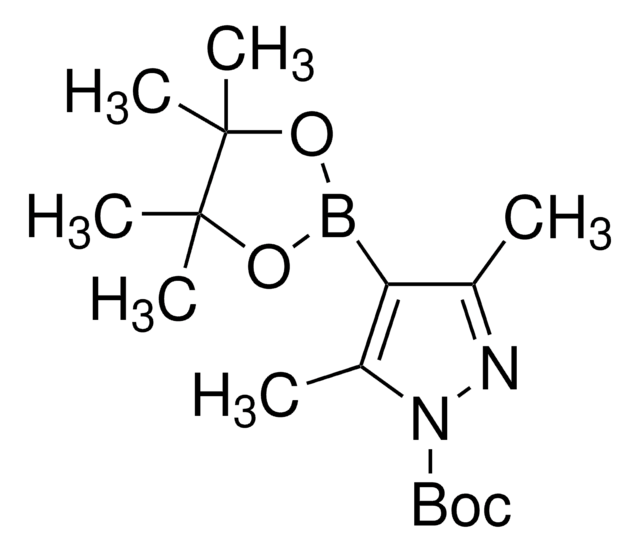905089
In Vitro Protein Expression (iPE) Kit II
Zaloguj sięWyświetlanie cen organizacyjnych i kontraktowych
About This Item
Kod UNSPSC:
12352200
NACRES:
NA.12
Polecane produkty
Powiązane kategorie
Zastosowanie
iPE-Quick Kit (prod.no. 767824) is available and intended for the confirmation of target protein expression utilizing E. Coli extract before the use of this iPE kit.
This is a protein synthesis system that utilizes E. coli cell extract. It allows easy and efficient protein expression by adding circular or linear DNA as the template DNA, which enables transcription of mRNA with T7 RNA polymerase.
This kit has been developed under license from RIKEN, incorporating their proprietary, advanced cell-free protein synthesizing technology into a kit dedicated to stable isotope labeling.
This kit is not intended to be used for disulfide-containing proteins. For disulfide-containing proteins, refer to prod.no. 797006.
Opakowanie
For information on pricing and availability, please contact Stable Isotopes Customer Service.
This page may contain text that has been machine translated.
Kod klasy składowania
11 - Combustible Solids
Temperatura zapłonu (°F)
Not applicable
Temperatura zapłonu (°C)
Not applicable
Certyfikaty analizy (CoA)
Poszukaj Certyfikaty analizy (CoA), wpisując numer partii/serii produktów. Numery serii i partii można znaleźć na etykiecie produktu po słowach „seria” lub „partia”.
Masz już ten produkt?
Dokumenty związane z niedawno zakupionymi produktami zostały zamieszczone w Bibliotece dokumentów.
Takashi Yabuki et al.
Journal of structural and functional genomics, 8(4), 173-191 (2008-01-02)
A two-step PCR method has been developed for the robust, high-throughput production of linear templates ready for cell-free protein synthesis. The construct made from the cDNA expresses a target protein region with N- and/or C-terminal tags. The procedure consists only
Takayoshi Matsuda et al.
Journal of biomolecular NMR, 37(3), 225-229 (2007-01-24)
Cell-free protein synthesis is suitable for stable-isotope labeling of proteins for NMR analysis. The Escherichia coli cell-free system containing potassium acetate for efficient translation (KOAc system) is usually used for stable-isotope labeling, although it is less productive than other systems.
Eiko Seki et al.
Analytical biochemistry, 377(2), 156-161 (2008-04-01)
Cell-free protein synthesis has become one of the standard methods for protein expression. One of the major advantages of this method is that PCR-amplified linear DNA fragments can be directly used as templates for protein synthesis. The productivity of cell-free
William C Yang et al.
Biotechnology progress, 28(2), 413-420 (2012-01-26)
Escherichia coli cell-free protein synthesis (CFPS) uses E. coli extracts to make active proteins in vitro. The basic CFPS reaction mixture is comprised of four main reagent components: (1) energy source and CFPS chemicals, (2) DNA encoding the protein of
Jun Yokoyama et al.
Analytical biochemistry, 411(2), 223-229 (2011-01-25)
During recent years, the targets of protein structure analysis using nuclear magnetic resonance spectroscopy have become larger and more complicated. As a result, a complete and precise stable isotope labeling technique has been desired. A cell-free protein synthesis system is
Nasz zespół naukowców ma doświadczenie we wszystkich obszarach badań, w tym w naukach przyrodniczych, materiałoznawstwie, syntezie chemicznej, chromatografii, analityce i wielu innych dziedzinach.
Skontaktuj się z zespołem ds. pomocy technicznej








